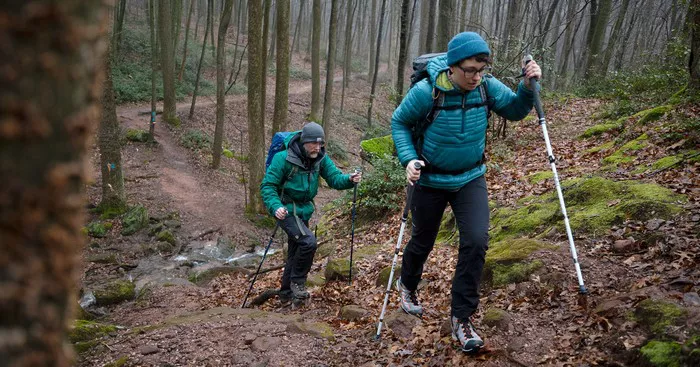When it comes to conquering the majestic peak of Mt. Whitney, the tallest summit in the contiguous United States, timing is everything. Situated amidst the rugged beauty of the Sierra Nevada mountain range in California, Mt. Whitney beckons adventurers from around the world with its towering presence and unparalleled vistas. However, choosing the optimal month for your ascent is a critical decision that can significantly impact your experience on the trail. In this comprehensive guide, we delve into the factors that influence hiking conditions on Mt. Whitney and identify the best month for undertaking this epic journey.
Understanding the Climatic and Trail Dynamics
Before embarking on any high-altitude adventure, it is essential to grasp the intricacies of the region’s climate and the unique challenges posed by the trail. Mt. Whitney boasts a diverse climate characterized by distinct seasonal variations, ranging from scorching summers to freezing winters. Snowpack accumulation during the winter months transforms the landscape into a winter wonderland, while the summer sun melts away the snow, revealing the rugged terrain beneath.
The Mount Whitney Trail, the most popular route to the summit, presents hikers with a series of obstacles, including steep ascents, rocky terrain, and unpredictable weather conditions. Factors such as snowpack depth, trail accessibility, and the presence of hazardous conditions such as ice and rockfall must be carefully considered when planning your hike.
The Battle of the Seasons: Evaluating the Pros and Cons
Each month offers its own set of advantages and challenges for those seeking to summit Mt. Whitney. Let’s explore the pros and cons of hiking during different seasons:
1. May – June: The Shoulder Season
May and June herald the transition from spring to summer, marking the beginning of the hiking season on Mt. Whitney. During this time, lingering snowpack from winter may still cover portions of the trail, particularly at higher elevations. While snowmelt can create slippery conditions and obstructed paths, it also adds a breathtaking element to the landscape, with cascading waterfalls and vibrant wildflowers adorning the mountainside.
Pros:
- Cooler temperatures compared to peak summer months.
- Reduced crowds on the trail, offering a more serene hiking experience.
- Ample water sources from melting snow for hydration.
Cons:
- Lingering snowpack may necessitate the use of specialized equipment such as crampons and ice axes.
- Limited availability of permits due to high demand.
- Unpredictable weather patterns, including sudden snowstorms and temperature fluctuations.
2. July – August: Peak Summer Season
July and August mark the zenith of summer, with warm temperatures and clear skies beckoning hikers to embark on their Mt. Whitney adventure. During this peak season, the trail is typically free from snow, offering unobstructed passage to the summit. However, the popularity of this period means that obtaining permits can be a challenging feat, requiring advanced planning and luck in the permit lottery.
Pros:
- Snow-free trail conditions, making for easier navigation and reduced risk of slips and falls.
- Longer daylight hours for extended hiking opportunities.
- Warmer temperatures conducive to camping and enjoying the outdoors.
Cons:
- High demand for permits, leading to fierce competition and limited availability.
- Crowded trail with increased foot traffic, diminishing the sense of solitude.
- Elevated risk of altitude-related illnesses due to the rapid ascent to high elevations.
3. September – October: The Tranquil Autumn
As summer fades into autumn, September and October offer a window of opportunity for hikers seeking a quieter, more contemplative experience on Mt. Whitney. With cooler temperatures and dwindling crowds, this shoulder season provides the perfect balance between favorable hiking conditions and natural splendor.
Pros:
- Crisp, clear days with comfortable temperatures ideal for hiking.
- Reduced crowds on the trail, allowing for a more intimate connection with nature.
- Stunning fall foliage as aspen and cottonwood trees don their golden hues.
Cons:
- Shorter daylight hours necessitating an early start to the hike.
- Potential for inclement weather, including early snowfall at higher elevations.
- Limited availability of services and facilities as businesses begin to close for the season.
Conclusion
In conclusion, determining the best month to hike Mt. Whitney requires careful consideration of various factors, including weather conditions, trail accessibility, and personal preferences. While each season offers its own unique rewards and challenges, striking the perfect balance between favorable weather and trail conditions is essential for a successful and enjoyable summit attempt.
For those seeking a thrilling adventure amidst pristine snowscapes and blooming wildflowers, the shoulder seasons of May and June present an enticing opportunity. Alternatively, the peak summer months of July and August offer snow-free trails and longer daylight hours, albeit with heightened competition for permits and increased crowds. Finally, the tranquil autumn months of September and October beckon with their serene beauty and cooler temperatures, providing a peaceful respite from the hustle and bustle of peak season.
Ultimately, the best month to hike Mt. Whitney is subjective and depends on individual preferences, experience level, and tolerance for varying trail conditions. Whether you’re drawn to the pristine landscapes of spring, the vibrant energy of summer, or the peaceful solitude of autumn, embarking on a Mt. Whitney adventure is sure to be an unforgettable experience that will leave you with cherished memories for years to come.

